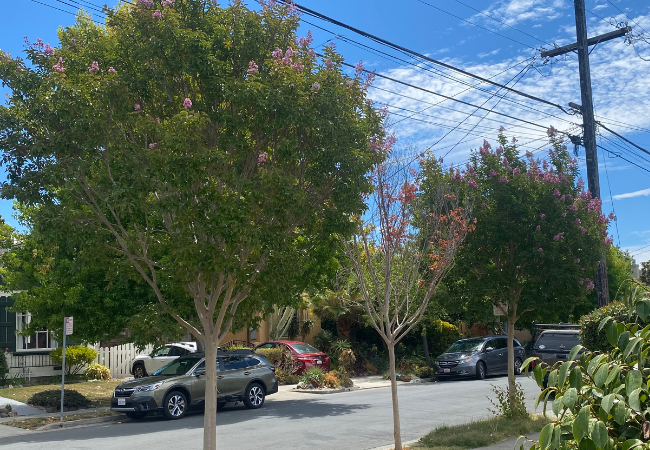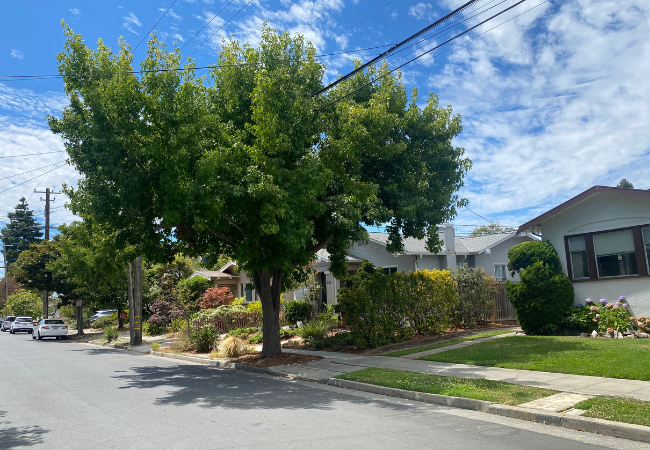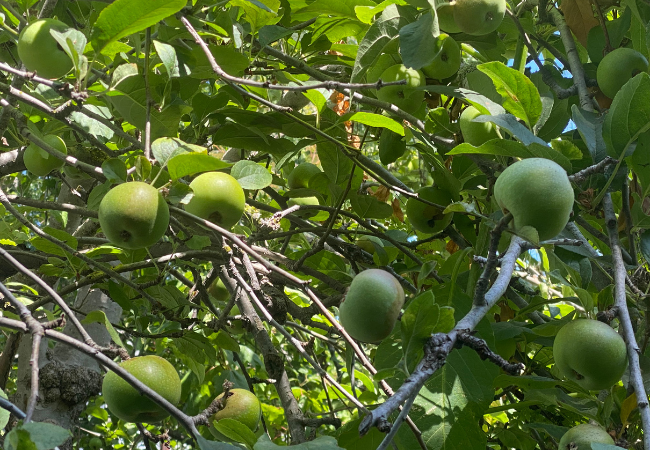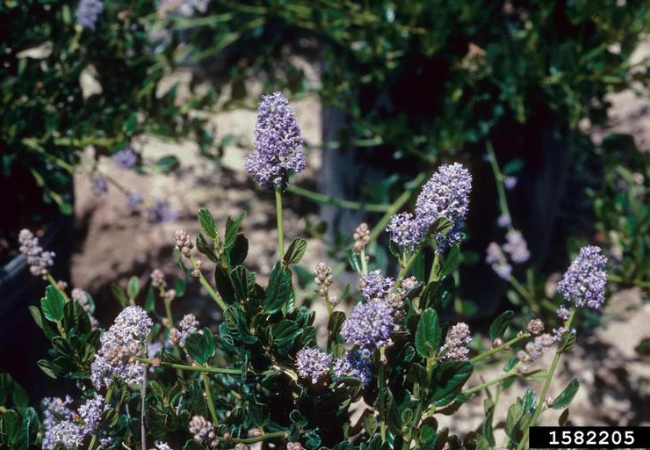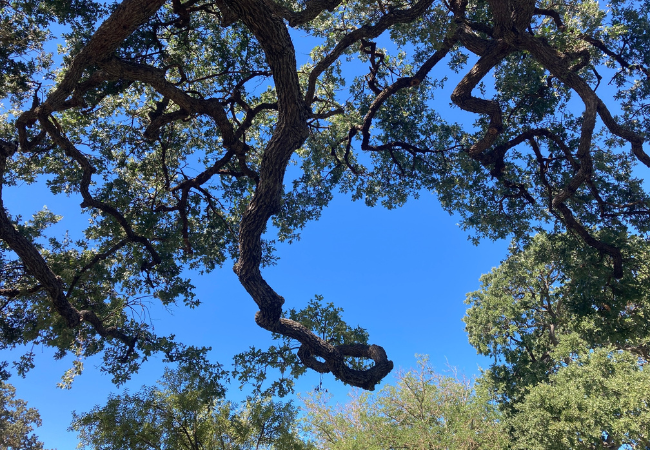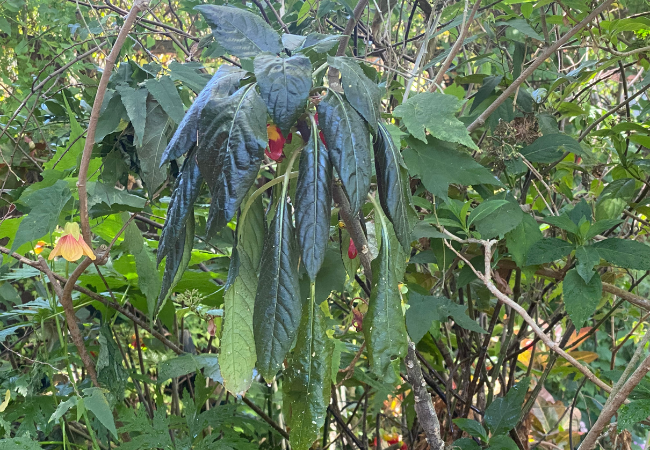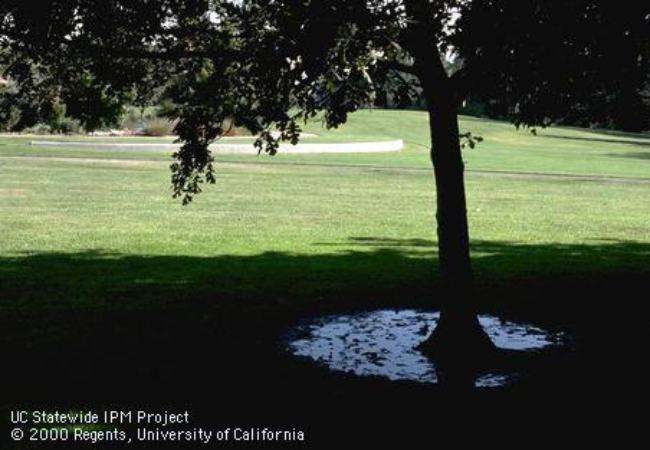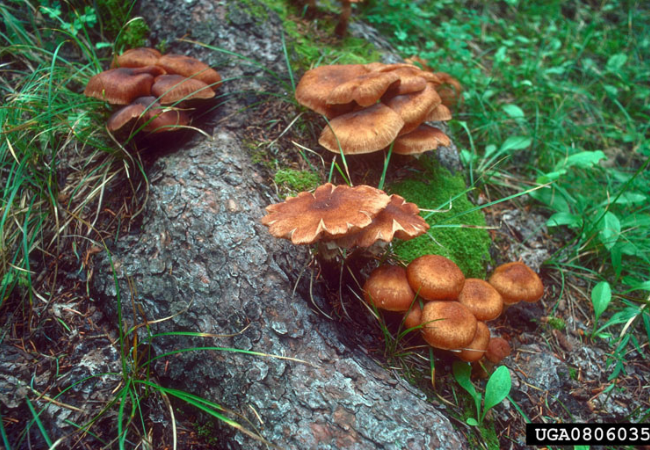The excessive heat days we have experienced in Northern California in 2024 may have caused us to look at our landscape trees and shrubs and notice that some are not looking so good. What does that mean? What can be done to help them survive and thrive? The answer often lies in the quality of water management for our trees and shrubs. Since water is such an important aspect, we begin this series on landscape trees and shrubs with a discussion on water management. The main focus will be on the watering of trees; however, that information can be applied to most shrubs and other woody plants.
Water Management - Critical to the Health and Survival of Trees and Shrubs
Symptoms of stress and disease Wilting or yellowing leaves, early leaf loss, twig and branch die-back, and a thinning canopy are symptoms that a tree is under stress.
When, Where, How Much Water – Direct and Critical Impact on Tree Health Reasons for the decline in the health of a woody plant are many, but water management is the most critical aspect to investigate when a plant seems to be under stress and declining. The amount of water has a direct impact on the health of the plant. Inappropriate soil moisture has an important secondary impact in that it can promote pest and disease problems. Poor water management can predispose plants to infection, leaf and fruit diseases. It can also lead to root and crown rot as well as an active infection of oak root fungus.
Water management takes on many aspects. Proper water management promotes healthy plant growth and development.
Factors affecting how much and when to water
Unfortunately, there is no simple answer to the amount of water to give your trees and shrubs.
How much, how fast and how often to water varies widely, depending on soil type, soil drainage, and moisture demand according to the plant species. The water needs of trees and shrubs are affected by the season and weather such as extended and prolonged drought, more extreme heat, and intense, wet winter storms (atmospheric rivers). Newly planted trees and shrubs, young trees, and mature trees have different water needs, but nearly all, including mature trees, need some summer water.
Useful resources for learning more about factors that impact watering practices include those that address:
-
Type of trees - related environment and water needs https://selectree.calpoly.edu/
-
Look up the watering needs of specific trees https://canopy.org/tree-info/caring-for-trees/trees-and-water/watering-guidelines/
-
Look up watering needs of trees, shrubs and other plants by city or region using the UC Davis California Center for Urban Horticulture “enhanced” WUCOLS (Water Use Classification of Landscape Species) Plant Searchable Database
-
Add compost to increase the amount of moisture your soil can hold https://mg.ucanr.edu/Gardening/Vegetable/Preparing/SoilImprovement/
-
Mulch https://cealameda.ucanr.edu/?blogpost=50517&blogasset=118849
-
Learn about Irrigation 101 for Landscape Trees https://ucanr.edu/blogs/blogcore/postdetail.cfm?postnum=41260
Good watering practices
Knowledge of the water needs of your plants and monitoring the moisture level of your soil will guide you in determining the amount of water needed and how to water.
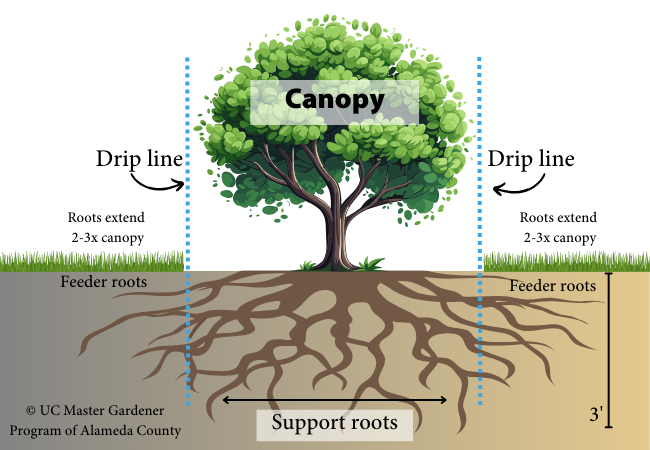
8 tips on watering trees
Excerpted with minor modifications from Tips on Watering Trees
-
Keep tree trunks dry. Trunks should not come into contact with water from sprinklers or hoses.
-
Apply the right amount of water at the right time.
-
Water newly planted trees regularly for a full season Many newly transplanted landscape trees die from the soil drying out too much between waterings because their root systems are small and need to be kept moist for a full growing season. Water newly planted trees regularly.
-
Water newly planted trees, including drought-tolerant species too. This schedule of regularly watering newly planted trees holds true for drought-tolerant species as well as those that require more water. Once plants become well rooted they should be watered less often but for longer periods of time. Established drought-tolerant trees will be able to go longer between waterings than those trees with moderate- or high-water needs
-
Water halfway to the dripline and beyond. Since tree roots spread outward as well as downward, water should be applied from mid-dropline and beyond the dripline of the tree.
-
Most established trees need water too. Most trees in California need supplemental irrigation above and beyond the naturally occurring rains, especially in times of drought. Water established trees less often but more deeply to encourage deep rooting and structural balance above and below ground. Be very careful if watering established native oaks since summer water can be detrimental to native oaks.
-
Trees need to be watered slowly and deeply. If you use a garden hose, apply the smallest trickle of water slowly, moving the hose every few hours to water the entire area around the tree. The deep watering encourages roots to grow downward and helps prevent sidewalk damage.
-
Do NOT water trees on the same irrigation/drip system as those used for lawns and groundcovers. The light, frequent watering every few days that is appropriate for lawns/groundcovers discourages the deep growth of tree roots.
Other tips for watering fruit trees and California natives
Watering fruit trees including citrus and avocados
Watering correctly is essential to the production of fruit and allows trees to keep a natural resistance to fungal diseases. This link https://ipm.ucanr.edu/homegarden/irrigating/ has more specific watering information on different trees including citrus, avocados and other fruit trees.
Watering of California natives
The vast majority of California's native plants are well-adapted to California's wet winter and summer dry climate, but even well-established native plants may need an occasional deep watering during hot, dry periods, perhaps one or two deep waterings over the summer. https://calscape.org/watering-native-plants
Tip: Don't water your ceanothus during the summer. Once established, summer watering may kill the plant. There are varieties of salvia that also don't like summer watering. Review watering guidelines by variety.
Watering established native California oak trees
“Even though oaks are known to be drought tolerant, summer irrigation may be beneficial to oak trees, especially during periods of prolonged drought, if water is kept at least 3 m (10 ft.) away from tree root crowns, or applied in the outer two-thirds of the root zone.” https://oaks.cnr.berkeley.edu/summer-irrigation-of-established-oak-trees/
Make sure California Oaks have a chance to dry out between waterings.
Common problems with water management
UC IPM, the statewide integrated pest management program has a very useful and detailed site on environmental disorders that focuses on the water management and pest problems. The information from that site formed the backbone of this section. Too little or too much water, the timing of water irrigation, and the downside of dripping, ponding, spraying water are all covered.
Water deficit
Symptoms: Leaves may droop, yellow, wilt, or drop prematurely. Severe, prolonged water deficit leads to shoot and branch dieback and, in some cases, bark cracking and trunk bleeding may occur. Mild but prolonged moisture deficit results in fewer flowers, fruit, slower growth, smaller leaves and increased sensitivity to pests. Plants stressed by drought are more susceptible to damage from mites, certain leaf-sucking insects, and most wood-boring insects
Management: Deep water your trees and shrubs by trickle watering, watering slowly for perhaps two hours. Water tree away from trunk, midway between trunk and dripline where the leaves end and rain drips off the tree, getting the water down to the roots that are often 12-18 inches or more below the surface.
Even trees that did fine without summer water in past years may need an occasional deep watering every month or two during extended hot weather.
Excess soil moisture
Symptoms: Over-irrigation has symptoms similar to those of underwatering. (See above.) Prolonged exposure to excess moisture results in roots dying, and plants become unable to take up water, resulting in symptoms similar to those of underwatering. Root decay pathogens such as Dematophora and Phytophthora spp. are present in many soils, yet usually become damaging only when excessively wet soil conditions favor them.
Management: Determine the cause of excess water. Soil that holds water too long can be improved by the addition of compost and other organics. The grade that causes water to pool or hold water for a long period can be altered. Change the irrigation schedule to adjust for changing seasons. If flooding of an area happens due to extended rains, drain the area when possible.
Water placement
Water dripping, ponding or spraying near the base of the trunk of a tree or shrub are primary causes of root and crown diseases. Soggy soil around the root collar, where the root and trunk join, promotes. Splashing water spreads fungal spores and splashing wets foliage, promoting leaf and fruit diseases such as anthracnose, brown rot, leaf spots and rust.
Seasonal timing
The seasonal timing of irrigation is important in disease development. Some California native trees may need summer water in drought years, but are sensitive to overwatering. For example, oak root fungus, Armillaria mellea, is present in dead or living roots in many soils, and it becomes active when soils are warm and moist. When people water native oaks frequently during the summer, moist roots and warm soils work together to predispose oaks and many other species to infection and death by oak root fungus.
Resources:
- Center for Landscape and Urban Horticulture
- Canopy - Healthy Trees, Healthy Communities
- Irrigation of trees and shrubs
- Irrigating fruit and shade trees and shrubs
- Landscape Tree Irrigation 101
- Oak Root Fungus
- Online Tools from UC IPM for Plant Problem Identification
- Root and Crown Rot
- Summer Irrigation of Established Oak Trees by UC Oaks
- Tips on Watering Trees
- University of California Integrated Pest Management (UC IPM)
- Water Management and Pest Problems from UC IPM
- Water Use Classification of Landscape Species ( UC Davis WUCOLS)
- UC Oaks - summer-irrigation-of-established-oak-trees/
- Watering Native Plants by Calscape
Have a gardening question? We'll help. You can reach us by:
-
Emailing acmg@ucanr.edu. Please include a photo of the problem, if you can, plus your name, phone number, city and a description of the problem.
-
Using our online form.
-
By phone, during our office hours, 10 am to noon Wednesday and 11 am to 1 pm Thursday: 510-670-5645. At other times, please leave a message and we'll return your call during our office hours.
-
In person at our Hayward office, during our office hours, only by appointment.
